Science
'Molecular Velcro' may lead to cost-effective alternatives to natural antibodies: Berkeley Lab researchers take cues from nature in designing a programmable nanomaterial for biosensing
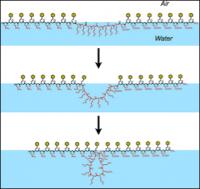
Long organic molecules called peptoids self-assemble into a molecular film on the surface of a water solution. As this film gets folded into a nanosheet, segments of the peptoid get pushed out into loops, which eventually decorate the surface of the nanosheet.
- Read more
- 351 reads
Incurable brain cancer gene is silenced: Gene regulation technology increases survival rates in mice with glioblastoma
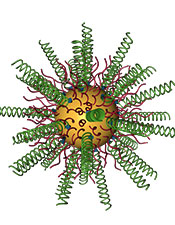
Researchers combined gold nanoparticles (in yellow) with small interfering RNAs (in green) to knock down an oncogene that is overexpressed in glioblastoma.
- Read more
- 455 reads
Cassini Swings Above Saturn to Compose a Portrait

A swing high above Saturn by NASA's Cassini spacecraft revealed this stately view of the golden-hued planet and its main rings. The view is in natural color, as human eyes would have seen it.
- Read more
- 288 reads
A Ghostly Trio from NASA's Spitzer Space Telescope
- Read more
- 493 reads
Quantum reality more complex than previously thought

Even an individual photon can travel along both arms of the interferometer at the same time. When it is unknown which path it is travelling along, we observe interference and the appearance of interference fringes. A strong signal is visible where the crests of light waves meet, and a weak signal is obtained at the meeting point of the troughs. If it is possible to determine which arm the photon travelled along, following leakage of information from the interferometer, the fringes disappear.
- Read more
- 425 reads
Super-thin membranes clear the way for chip-sized pumps
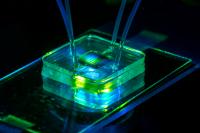
A microfluidic bioreactors consists of two chambers separated by a nanoporous silicon membrane. It allows for flow-based assays using minimal amounts of reagent. The ultra-thin silicon membrane provides an excellent mimic of biological barrier properties. NOTE: This image combines two exposures in order to capture the brighter and darker parts of the scene, which exceed the dynamic range of the camera sensor. The resulting composite is truer to what the eye actually sees.
- Read more
- 391 reads
Scientists' new approach improves efficiency of solar cells
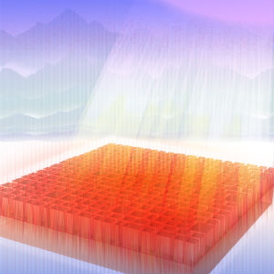
A quasi-random structure to maximise performance of a thin film silicon solar cell.
- Read more
- 411 reads
Earth from Space: Lands of change

Lakes and mountains of western Uganda are captured in this Envisat radar image
- Read more
- 308 reads
NASA's Great Observatories Begin Deepest Ever Probe of the Universe

These (image above) are NASA Hubble Space Telescope natural-color images of four target galaxy clusters that are part of an ambitious new observing program called The Frontier Fields.
- Read more
- 372 reads
ZEISS Microscopes used to create images for Art Exhibit at Midway Airport: Art of Science: Images from the Institute for Genomic Biology
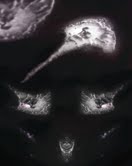
- Read more
- 364 reads
Human Rights
Fostering a More Humane World: The 28th Eurasian Economic Summi

Conscience, Hope, and Action: Keys to Global Peace and Sustainability

Ringing FOWPAL’s Peace Bell for the World:Nobel Peace Prize Laureates’ Visions and Actions

Protecting the World’s Cultural Diversity for a Sustainable Future

Puppet Show I International Friendship Day 2020


